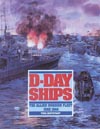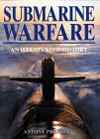The Mighty Hood
Bradford, Ernle Dusgate Selby
1974, White Lion, London
ISBN 0856171085
224 pages, 8 pages of photos, ship's plan
| Type. | General History |
| Pros. | Effective prose style; solid use of secondary and verbal sources, personal view of events. |
| Cons. | Early 1950s account with no access to official sources; no photographs, hard to acquire today. |
| Rating. |  |
This review refers to the 1959 edition of this book.
Ernle Bradford’s 1959 account of the largest and most-loved ship in the Royal Navy is a smooth, well-written and careful account, typical of its period. It contains some clear and concise analysis, some evocative descriptive narrative, much of it reconstructed, using his own experience of large RN ships of the time; and a fair account, given the limits of the sources, of the life and death of the ship. It is, not surprisingly, fairly patriotic and laudatory, for Hood was not just the most venerated ship of her era. She was the embodiment of British seapower like Victory and Golden Hind before her, and a ship nobly lost, in a deadly conflict, in a book written when memories were still comparatively fresh and raw. There were no official sources available in 1959, and such commercial and popular accounts as these for the general public had to be assembled from more mundane places. Bradford, to be fair, did use German sources as equally as British. At that point, however, there were still many survivors and eyewitnesses of Denmark Strait alive, and Bradford gathered many useful and effective memories from former servicemen, as well as press reports of her many famous tours and visits round the world. He illustrated his book with descriptions of life aboard in the 1920s and 1930s, as well as her brief war career, which really capture the sounds and sensations of time spent in peace and war aboard a big, complex, vulnerable and famous ship. Leaving wartime anchorages after dark, at speed in heavy weather, dressed and on display in peacetime foreign ports, the damp and humidity and lack of privacy of her messdecks and the spacious luxury of her wardroom and officer’s cabins, all are given a depth and ease of imagination lacking in many later, more surgical, better sourced works.
In addition to her type and her design, flaws included, Bradford steadily narrates her career, the personality of the ship and her captains, officers, and the characteristics of her crew, in fairly accurate if stereotypical and traditional text. Hood was an outclassed ship, one with dangerous liabilities built into her, long before she met her end at German hands. Bradford summed up her building after the Great War, the whirl of social and naval events, the endless cruising and showing the flag in the interwar period, the continual putting-off of the vital reconstructions which benefitted her younger consorts in the RN (and which would have ruined her looks and grace, according to modern descriptions and diagrammes). Bradford then described the coming of war, the tedious early patrols, the shameful action of Mers el Kebir, the brief wartime refits, and the last, famous, tragic voyage, together with, more briefly, the enquiry and the hunting and sinking of Bismarck.
Bradford’s chief achievement was to collect the memories of her men and observers, the unique place and power she held in the minds and hearts of the British and those Europeans, Americans and Africans who saw and felt her during the major points of her life. Ludovic Kennedy mined these descriptions and anecdotes, the sense of the ship, most effectively for his brilliant Pursuit of 1974. Like every other book dealing with the ships and events of the Bismarck operation, this book becomes more valuable as a picture of its time of writing, and the preservation of opinions and memories from Hood’s time, with every passing year, as well as gaining added power and poignancy from the discovery of the shipwreck on 21 July 2001, having been lost in Denmark Strait since that tragic week of late May 1941. Bradford’s account was by no means perfect, but is a vital source for views and opinions of the period and the ship, and moreso as a point between the memories and official sources of the years after the war, and the modern analytical and surgical accounts of the operations and the loss.
The reviewer welcomes your comments on this review.
Review written by Ian Campbell, Launceston, Tasmania.
Published on 23 May 2002.
Return to our main review page.



